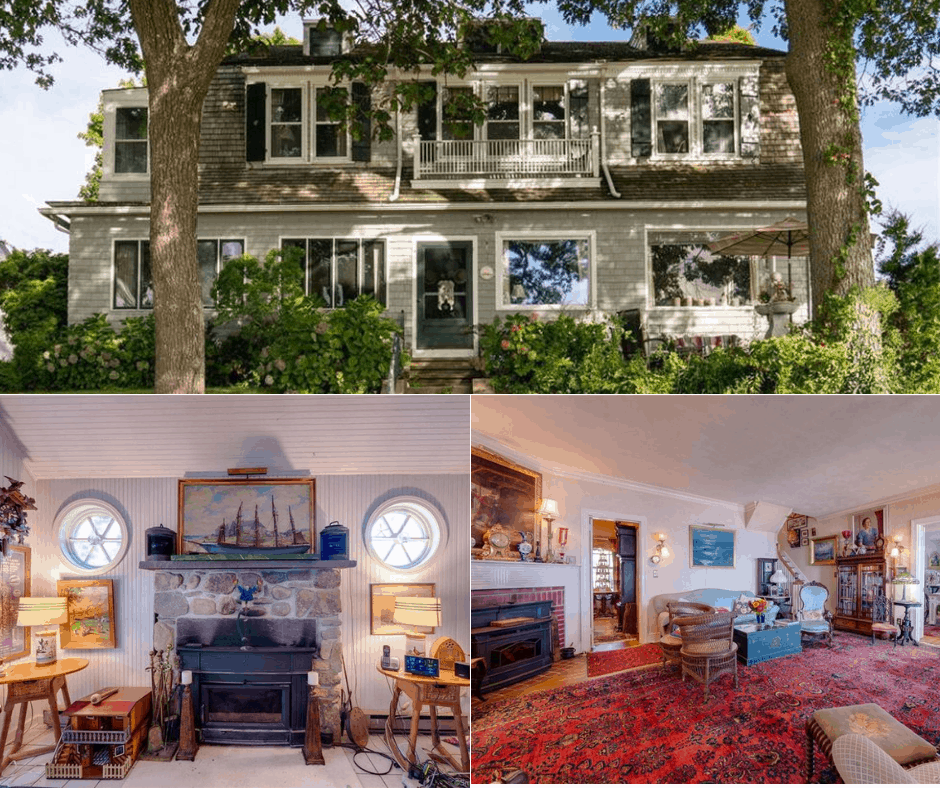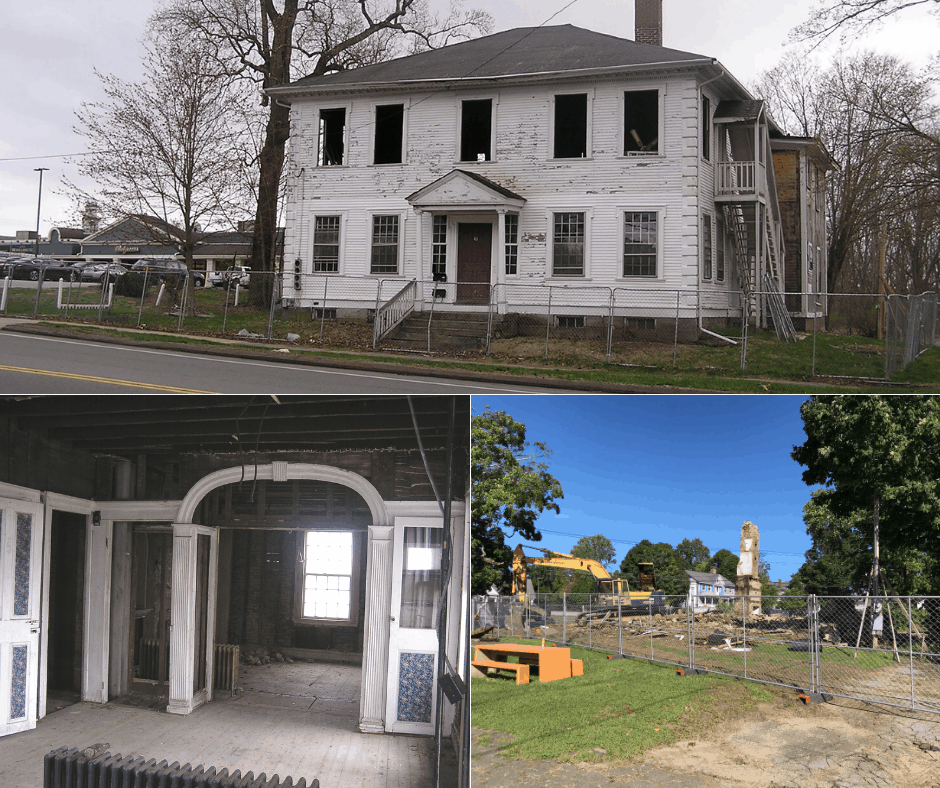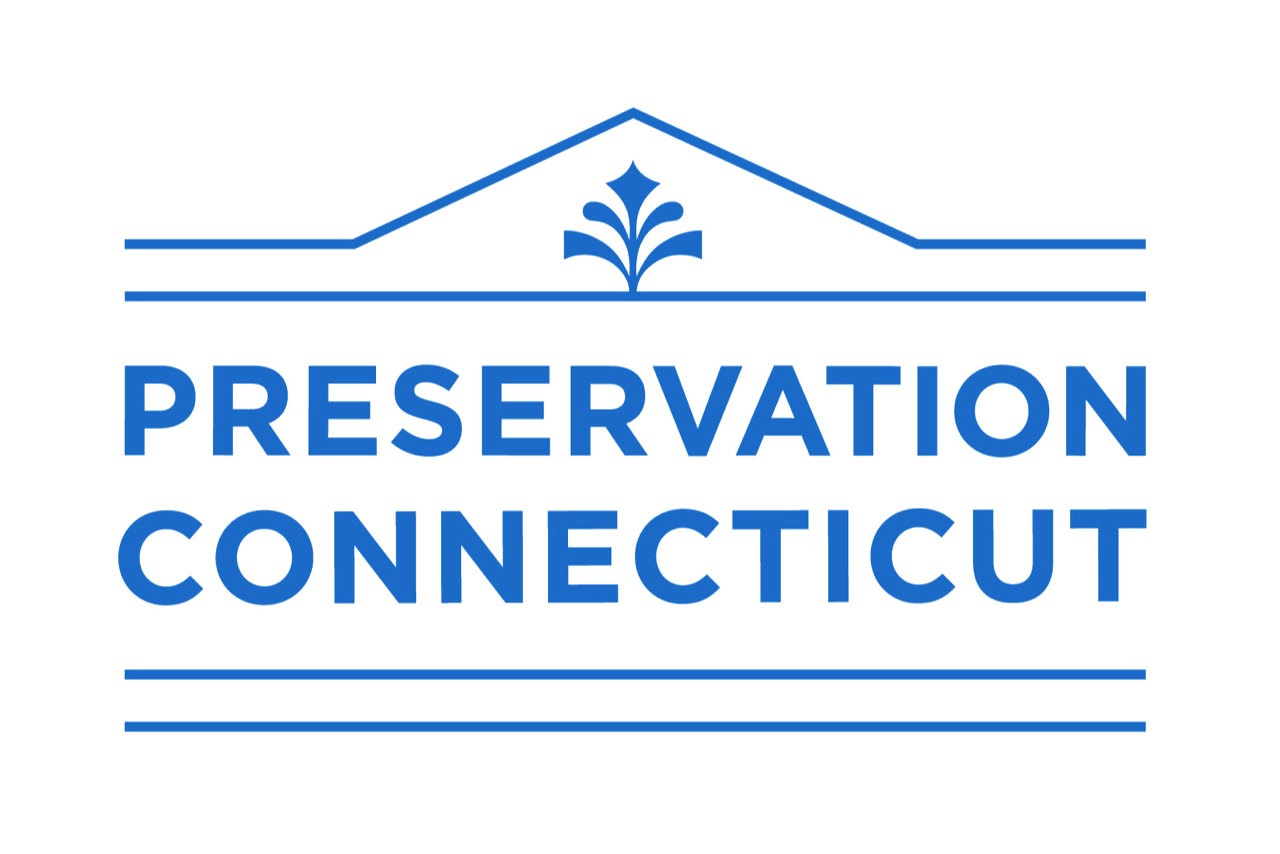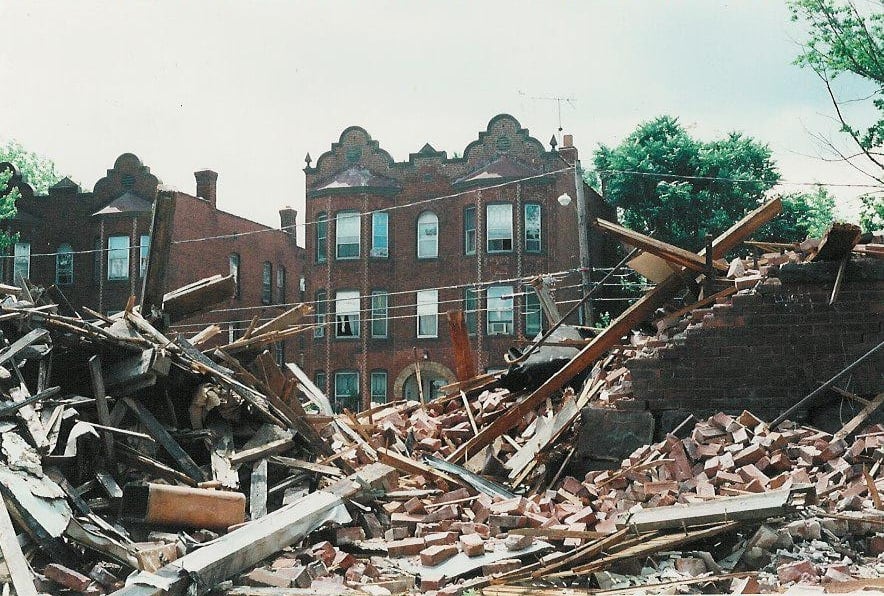A component of our work in preservation is tracking demolition notices. Of our 169 towns, 59 have enacted a Demolition Delay Ordinance whereby a citizen may object to the proposed demolition of a historic building, which in turn triggers a waiting period (often 90 days) before the building can actually be knocked down. The idea is to create a pause to allow for discussion of alternatives to demolition. The ordinance also allows for anyone to be informed of such notices upon written request. Out of the 59 towns for which Preservation Connecticut has requested notification, only 19 comply.
Many of the demolition notices that we receive are posted on our website. We also track data on these properties internally including address, square footage, year built, and materials. In 2020 we saw a dramatic increase in demolition notifications, and with that, an alarming increase in the loss of historic materials to landfills. There appears to be no end in sight, as this trend steadily continues in 2021.
The numbers are concerning. In 2020 those 19 towns sent us roughly 191 demolition notices. For comparison purposes, in 2019 those same 19 towns sent us 121 demolition notices. That’s over a 50% increase in demolition of typically sound, well-built historic structures in the course of one year!
What’s more, those 191 demolished buildings total approximately 769,659 square feet (the area of more than 13 football fields!) of wood framing, brick chimneys, stone foundations, wood flooring, and historic windows, not to mention carpeting, linoleum, drywall and other non-historic materials that wound up in landfills. Now, think about the fact that these numbers represent only 11% of towns in the state! What would the number be for all 169?
Here are two buildings we lost in 2020:

Gull Cottage, Clinton (c.1880) In 2019, Preservation Connecticut had the privilege of “getting to know” this property by featuring it as one of our Open House Talks. Despite its rich history, quirky features (including porthole windows), and strong structure (surviving hurricanes, blizzards, and tourist season) this house succumbed to the wrecking ball in 2020 after it was bought by new owners.
Coggshell Robinson House, Colchester (c.1800-1816) Alas, even designation on the National Register of Historic Places does not guarantee protection. In April 2019, at the request of the local community, our staff met with the property owner to help reimagine this house as part of a larger development. Despite the involvement of Preservation Connecticut, the State Historic Preservation Office, and invoking Connecticut Environmental Protection Act (CEPA) mediation, the house was unexpectedly demolished in 2020.

What are the reasons behind this rise in demolitions?
One significant reason is that the Covid-19 pandemic created an exodus from metropolitan areas, such as New York City, to more suburban locations, including nearby Connecticut. With that came a rise in demand for the real estate market, strong housing sales and consequently a high rate of demolition requests in favor of new construction, especially along the Connecticut shoreline. It is also possible that some of the notification and permitting processes may have been more flexible to due to the pandemic restrictions.
What are the lessons to be learned?
Education is key.
The value of old buildings is not commonly understood. Preservation Connecticut offers a variety of educational resources that are immediately available (kudos to all those already taking advantage of these opportunities). We know that it can not be assumed that the public knows about preservation tools and it’s our mission to inform them!
- Circuit Riders. The field staff of Preservation Connecticut is available to take calls/emails and address any preservation related questions.
- Talking About Preservation. We host weekly chats on preservation topics to highlight the importance and benefits of protecting historic buildings.
- Restoration Workshops. We partner with craftspeople to educate preservationists on how to properly restore and preserve features of their historic homes.
- Preservation 101 Presentations. Our team is always happy to speak to communities about preservation basics whether it be for a neighborhood, local historic district, or the whole town. Please reach out to us if you would be interested in this type of presentation- at no cost!
- Preservation Connecticut News. Preservation Connecticut’s bi-monthly newsletter is a great source of all things preservation in Connecticut. We cover a plethora of topics and many years of back issues are available online and at our Hamden office.
Designations do matter.
Yes, National and State Register of Historic Places designations are honorary. They do not directly protect a building BUT they do two very important things:
- Bolster pride of place for owners and the wider community by recognizing the historic significance of the site.
- Provide eligibility for incentives like Connecticut’s historic tax credit programs so owners can reap economic benefits for caring for their building.
This isn’t over, yet.
We know we can do more. In 1980, our Connecticut Preservation News reported the prior year as a bad one for demolitions. We think the authors said it best, “We must be able to explain why, aesthetically, socially, and economically, preservation makes sense…Even more crucial than effective last-minute action, however, is planning ahead. Preservationists must establish a preservation mentality in their cities and towns- to make sure that government officials, business people and developers as well as the preservation community understand the social, aesthetic and economic benefits of preservation.” (D. Felske, V. McVarish, T. Morrison)
Please share with us your ideas to educate our communities. Join our efforts to stop the trend of demolishing valuable historic properties and make 2021 a year to cherish, rather than destroy, our history.

